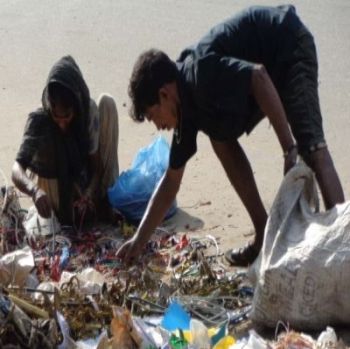Dietary Practices and Nutritional Status of the Urban Vulnerable: A Cross-Sectional Study on Waste Collectors of Dhaka City in Bangladesh
Abstract
Purpose
The socioeconomic conditions of urban waste collectors are vulnerable. However, their nutrition vulnerability remains undocumented. Here we focused on dietary practices and the nutritional status of waste collectors of Dhaka city in Bangladesh.
Methods
A cross-sectional design was employed that included 130 waste collectors from 15 different sites of Dhaka city. The 24-hours recall method, body mass index (BMI) and BMI for age Z-score were used to determine dietary practices and nutritional status respectively. Chi-square test, Fisher’s exact test, and multinomial logistic regression analysis were used to observe the associations and their risk factors.
Results
The majority (58.5%) of the waste collectors were normal by BMI whereas 36.2%, 4.5%, and 0.8% were underweight, overweight, and obese respectively. The prevalence of underweight was higher among males and respondents less than 18-years old (P<0.001). The dietary pattern of the respondents was poor. Meals were mainly rice and vegetable-based. Consumption of meats, eggs and fruits was low. Only 18.4% and 16.92% respondents were found to consume meat and eggs at least once a day, respectively. In addition, 78.5% consumed insufficient foods in their main meals, 9.2% had skipped meals and 13.1% consumed stale food and food waste regularly. Consumption of less than three main meals a day and food of poor dietary quality were risk factors of underweight.
Conclusion
Findings demonstrated that waste collectors in Dhaka city had poor nutritional status which was primarily associated with inadequate dietary intake. Increased quality and quantity of food in the diet, which could be achieved through appropriate health and nutritional support, are needed to overcome the situation.

Authors retain all copyrights. In making a submission to World Nutrition, they are certifying that all material is theirs except quotations, as indicated, and that they have obtained permission for any photos, tables, or graphics taken from other publications or websites.




